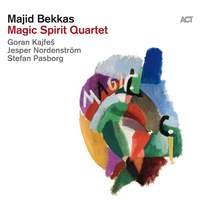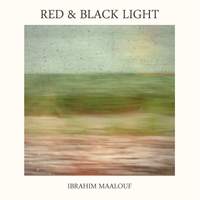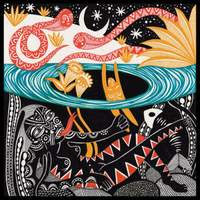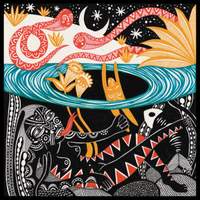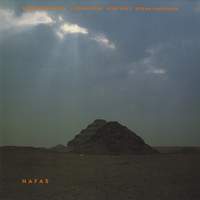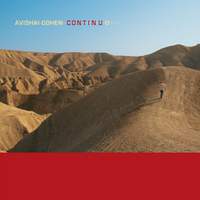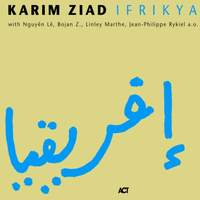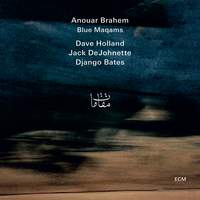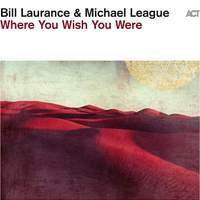Jazz Genre Guides,
Arabic Jazz

The history of the Arabic influence in jazz is a tale of intercultural exchange, intrinsically linked to the activity of American musicians in the fifties and sixties. Not far removed from the idea of ‘ethno-jazz’, a style of music imbued with worldly sounds and feeling, this was the point where jazz musicians began embedding non-Western elements into their repertoire, reflected in their compositions and use of Eastern instrumentation as both an expression of outward discovery and inner growth.
As is often the case, the allure of this mysterious taste owes its success in no small part to the surface-level depiction of foreign cultures which, at the time, would still have appeared ‘exotic’ to your average Western jazz-listener. Granted, this was the era of the Hollywood epic, not to mention a rapid period of cultural globalisation, the likes of which post-war society had never seen. Perhaps these albums were merely offshoots of that same appetite for antiquity, but it can be difficult to dispel these aspects of orientalism when so crudely drawn out under the reductive banner of ‘East meets West’.

That’s not to say that musicians lacked the willingness to engage seriously with these intercontinental occurrences before incorporating them into their own work, however. Duke Ellington’s Far East Suite (1967), largely inspired by his 1963 tour of the Middle East and Indian subcontinent, expertly deciphers these points of cultural transmission and raised the big band idiom to new heights. Similarly, Ahmed Abdul-Malik was equally proficient on the oud as he was double bass, offering a string of refreshing fusions of jazz with Arabic and African music – but they were not the first tourists to traverse this junction, neither personally nor professionally.
In some ways, this marriage can be traced back in part (though not exclusively) to the towering figure of Afrofuturistic bandleader Sun Ra, whose deep fascination with Ancient Egypt inspired his onstage attire and personal identity. In fact, it was Ra who first encouraged a destitute young Ferrell Lee Sanders to adopt the name ‘Pharoah’. Like many other African-Americans at the time, the saxophonist was motivated to turn to Islam during the early part of his life in a decision that would galvanise the continuance of his artistry and career, before branching out into a spiritual vein of mysticism over the course of the following years – much like his former mentor, John Coltrane.
For others, their conversion was a response to the political circumstances of post-war America, and the discrimination and social turmoil black people habitually faced. But, the extent to which this sense of personal development coloured these artists’ work differed greatly between them. From the late-fifties, for instance, the multi-instrumentalist Yusef Lateef fully began to embrace the aesthetics of the Middle East and beyond in his exploration of far-flung musical concepts, whereas Ahmad Jamal’s introspective style reflected a more personal faith.
Why should American musicians get all the credit?
Surely, we could grasp the role jazz has played in Arabic culture by examining the brilliant music to have come out of this region — so, let’s begin! A name synonymous with Egyptian jazz, Salah Ragab was one cool sphynx cat. In response to the American jazz movement, he commandeered the Cairo Jazz Band in a jauntily modal fashion, ushering in a new Saharan venture to the territories of Arabic music. A military man, Ragab even colluded with Sun Ra upon the Saturnian’s fraught visit to the country in 1971, helping to release the band’s instruments which had been seized upon entry.
Luckily, we have moved into a time where joint efforts between international artists are more encouraged than ever. One fantastic example of this is last year's Jarak Qaribak (2023), an album of cross-border collaborations from Dudu Tassa and Jonny Greenwood, which reworks Arabic love songs from around the Middle East with a stellar cast of vocalists.
To focus on one Arabic instrument alone, the oud is perhaps the most recognisable and has played a central role in the development of the genre to this day. Rabih Abou-Khalil, an early Lebanese pioneer, helped bring traditional music to a wider audience with the release of his album Nafas (1988) on ECM. Anour Brahem went one step further, combining classical Arabic and folk music with jazz on albums like Thimar (1998), always pushing boundaries before practically reinventing the wheel on Blue Maqams (2017).
Of course, no contemporary genre is complete without its ever-evolving batch of fresh talent. Straight off the bat, French-Lebanese trumpeter Ibrahim Maalouf’s classical upbringing is an intrinsic source of inspiration to his unique style of playing and composing, whilst British-Bahrani Yazz Ahmed seeks to blur the lines with her electronic explorations between styles. So influential is the Arabic approach that several Western musicians have been inspired to study it without prior training. Take the forward-thinking collaboration between Snarky Puppy's Bill Laurance and Michael League, which saw the latter implement his newly-minted skills on the oud for the first time. It's evident, though the times in which we live may seem divided, that our natural urge to connect and inspire with one another through music is a flame that will never be extinguished. Thanks to the triumph of the migration of jazz music and its performers around the globe, we will never be short on meaningful interactions or the chance to learn.
Take a trip through Arabic Jazz with a playlist plus a selection of essential albums below...


Arabic Jazz
Our latest genre guide covers the many artists to have been influenced by Middle Eastern sounds, such as Duke Ellington and Yusef Lateef, as well as the international musicians who proudly wear their heritage on their sleeves, including Ibrahim Maalouf and Yazz Ahmed. (Pictured: Yazz Ahmed) 3 hours 14 minutes
Available Formats: MP3, FLAC, Hi-Res FLAC
Available Formats: MP3, FLAC, Hi-Res FLAC
Available Formats: MP3, FLAC, Hi-Res FLAC
Available Formats: Vinyl Record, MP3, FLAC
Available Formats: CD, MP3, FLAC, Hi-Res FLAC
Available Formats: MP3, FLAC, Hi-Res FLAC


